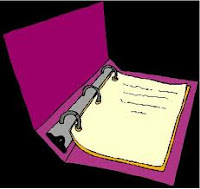Monumental tasks, like painting and moving, have a lot in common with writing a book. How can we tackle these big jobs without going crazy? Here's what works for me:
- Create a plan--Before starting, know where you want to end up. With the rooms, I noted which tasks should happen in which order for a smooth(ish) transition. Same thing with a novel. If we know the ending, we have a clear goal. We can then figure out how to get there. We don't have to plot (although I'm a plotter), but at least knowing our destination helps keep us focused.
- Divide jobs into small pieces--Looking at the job as a whole can be daunting, and sometimes it's tempting to not even start. But I focused on one room at a time, and then moved on to the next stage. Same with writing a novel. If we take it step by step, chapter by chapter, draft by draft, the enormous project won't overwhelm us.
- Work while the idea is hot--My poor husband. Once I had it in my head that we were going to move rooms around, I wanted to do it NOW. I knew that if I procrastinated, I'd never dive in. When writing our books, if we work work work while we're hot, we're taking advantage of momentum. That will help us through the tough times.
- Push through when you feel like quitting--After the first room was finished, I never wanted to lift another paint brush again. After the second room was finished, I was close to tears with exhaustion. But I couldn't quit. As writers, there are times when we may feel like quitting a project, or writing altogether. But if we push through and finish that project, or push through those moments of doubt, we'll be happier on the other side.
- Bring in the calvary--Our kids are 15, 12, and 12, and definitely old enough to work. They dusted, cleaned windows, carried furniture, and learned how to roll paint on the walls. They also learned how proud one feels with a job well done. In our writing lives, we can't do it alone. Our critique partners, beta readers, agents, and editors are the calvary, and will help save the day.
- Be patient with imperfections--My home was in a state of chaos for about a week, and I couldn't wait until order was restored. The job was done nicely, but it's not perfect, and I'm ok with that. When we finish our first drafts, we're far from truly being finished. But if we're patient with the imperfections, we'll go much easier on ourselves while we work out the kinks.
Now that our home project is done, and our twins are happily in their own rooms, I'm so glad we put in the hard work. Just like when I've finished a book, and I'm gratified that I opened a vein and bled onto the page.
Have you tackled any major projects lately? In your home or writing life? What were some of your strategies for getting through it? Please share!




